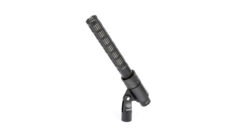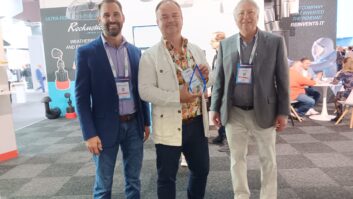SYDNEY — 19 January 2017 — The Society of Motion Picture and Television Engineers(R) (SMPTE(R)), the organisation whose standards work has supported a century of technological advances in entertainment technology, today announced that the SMPTE Australia Section has extended the call-for-proposals deadline for the SMPTE Australia Conference & Exhibition (SMPTE17). The new deadline for proposal submissions is the close of business on 3 February.
SMPTE17 runs over 18-21 July at the new International Convention Centre (ICC), Darling Harbour in Sydney. The biennial conference and exhibition is Australia’s premier forum for the exploration of media and entertainment technology, covering current and future developments in media, content creation, image and sound, and the allied arts and sciences. Conference delegates include the industry’s technology thought leaders and decision makers. The technical conference is supported by a 10,000-square-metre (100,000-square-foot) exhibition, delivering another 8,000 qualified visitors. The three-day conference and four-day exhibition will focus on linking the cutting edge of development with practical solutions for problems facing today’s media industries.
“Much has changed for the industry over the past two years, and SMPTE17 will feature technical sessions and expert presentations that illustrate key advances in the motion-imaging industry,” said Ian Fellows, chair of the SMPTE Australia Section Conference Committee. “The deadline extension will help to ensure that we’re bringing attendees the latest insights and the richest possible array of paper presentations.”
Proposed papers for SMPTE17 must be informational and must address technical theory, research, innovation, application, or practice specific to any of the evolving technologies associated with the media technology industry. Student papers and case studies are strongly encouraged. Papers that are commercial or promotional in nature will not be considered, nor will those that already have been published. Workshop and whole-session concepts should relate to the general theme of the event and should be demonstrably relevant to the careers and professional lives of delegates.
Topics for SMPTE17 papers include resolution beyond 2K, high-dynamic-range (HDR), and extended colour gamut; broadcast infrastructure, including both serial digital interface (SDI) and Internet Protocol (IP) as well as commercial off-the-shelf (COTS) and dedicated hardware; virtualisation, the cloud, software as a service (SaaS), and micro-services; virtual and augmented reality (VR/AR); artificial intelligence; remote IP-based production; ad hoc and mobile Wi-Fi; display technologies; cinema processing; content security; the future of transmission via subscription video on demand (SVOD), transaction video on demand (TVOD), and over-the-top (OTT)/streaming services; content monetisation; social media; engaging young professionals in the industry; and media technology education for the next generation.
Further information on the conference, including details on submitting a paper proposal, are available at www.smpte.org.au. Information about the exhibition is available at www.smpte.com.au, and more information about SMPTE is available at www.smpte.org.
# # #
About SMPTE Australia Section
The Australia Section of SMPTE was founded in 1971. Today, it is part of the SMPTE Asia-Pacific Region that includes more than 750 members. SMPTE in Australia has been a leader in building ties between like-minded and guild organisations serving the media and content industry. Further information about SMPTE Australia Section is available at smpte.org.au.
About the Society of Motion Picture and Television Engineers(R) (SMPTE(R))
For more than a century, the people of the Society of Motion Pictures and Television Engineers (SMPTE, pronounced “simp-tee”) have sorted out the details of many significant advances in media and entertainment technology, from the introduction of “talkies” and colour television to HD and UHD (4K, 8K) TV. Since its founding in 1916, the Society has received an Oscar(R) and multiple Emmy(R) Awards for its work in advancing moving-imagery engineering across the industry. SMPTE has developed thousands of standards, recommended practices, and engineering guidelines, more than 800 of which are currently in force today. SMPTE Time Code” and the ubiquitous SMPTE Color Bars” are just two examples of the Society’s notable work. As it enters its second century, the Society is shaping the next generation of standards and providing education for the industry to ensure interoperability as the industry evolves further into IT- and IP-based workflows.
SMPTE’s global membership today includes more than 7,000 members: motion-imaging executives, creatives, technologists, researchers, and students who volunteer their time and expertise to the Society’s standards development and educational initiatives. A partnership with the Hollywood Professional Association (HPA) connects SMPTE and its membership with the businesses and individuals who support the creation and finishing of media content. Information on joining SMPTE is available at www.smpte.org/join.
All trademarks appearing herein are the property of their respective owners.
Share it on Twitter:https://twitter.com/intent/tweet?text=Call for Papers Extended for @smpteconnect Australia 2017 (SMPTE17) – https://goo.gl/RjbScs










